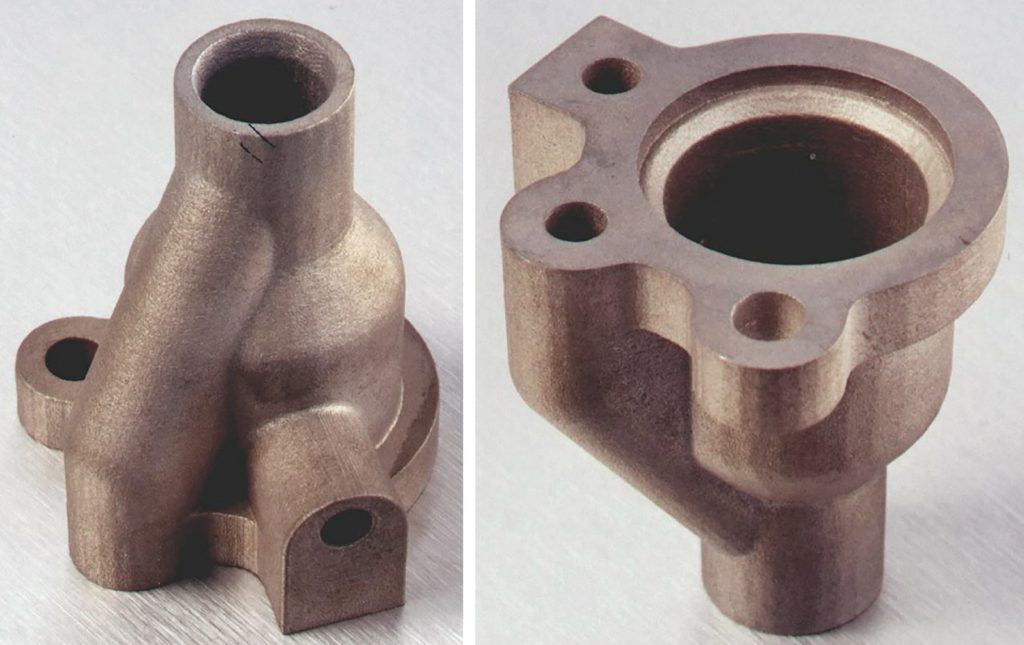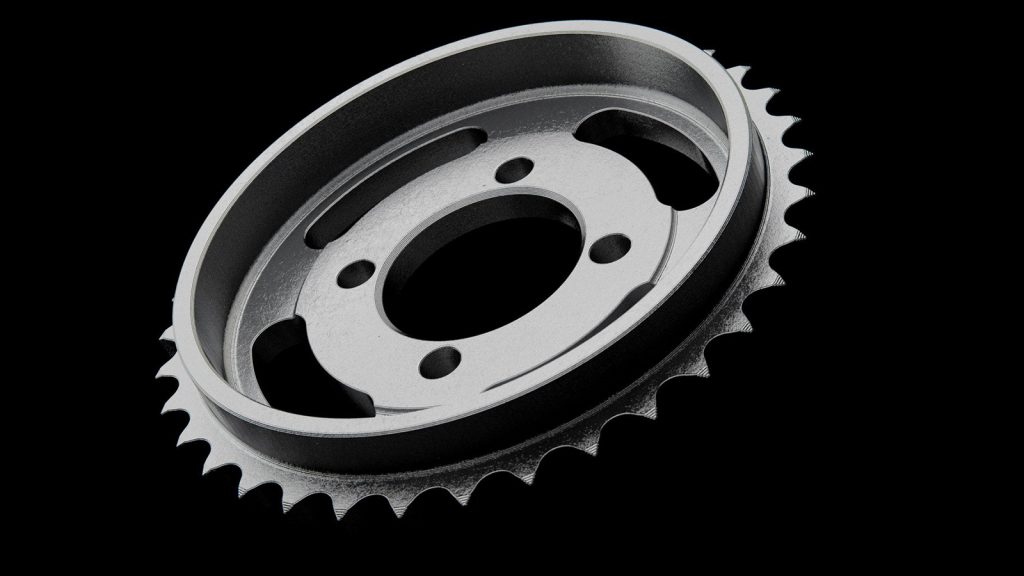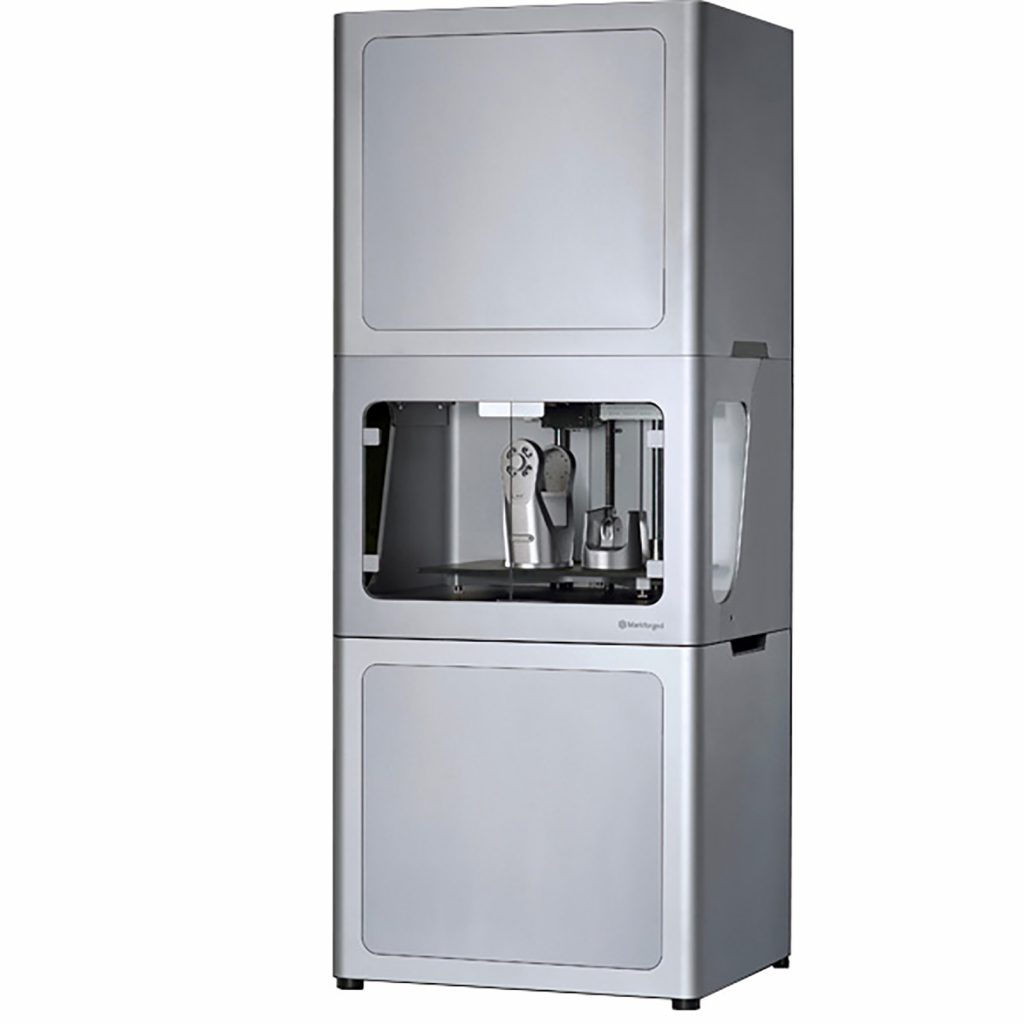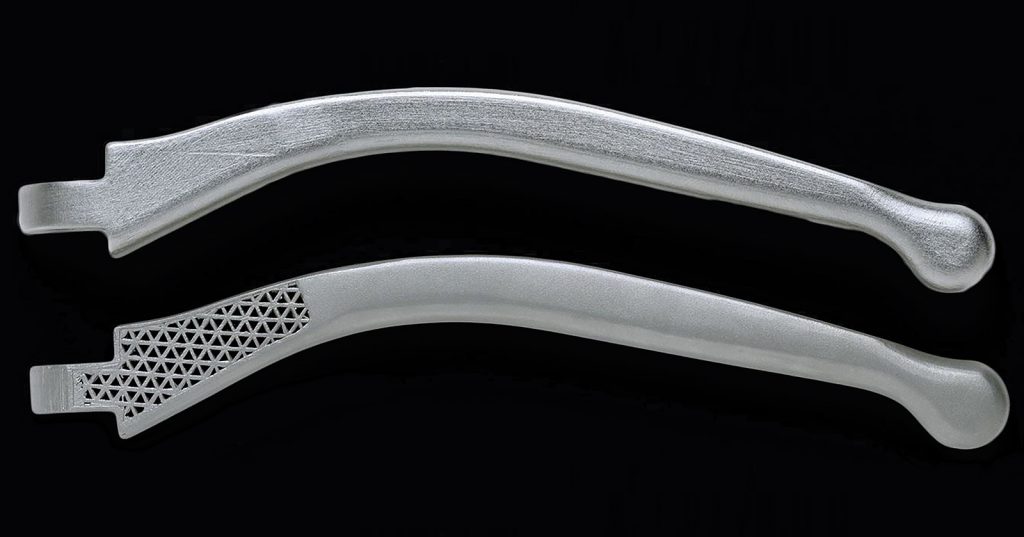Markforged: Taking a different approach to metal Additive Manufacturing
In January this year Markforged Inc., based in Cambridge, Massachusetts, USA, announced its Atomic Diffusion Additive Manufacturing (ADAM) process along with the Metal X production system. The company is more widely known for its successful development of composite printing technology, introduced in 2014. In the following report, Ian Campbell and Terry Wohlers discuss ‘indirect’ metal AM systems and outline the advantages and disadvantages of such systems in relation to commercial production. [First published in Metal AM Vol. 3 No. 2, Summer 2017 | 5 minute read | View on Issuu | Download PDF]

Metal Additive Manufacturing has received a great deal of attention in the past few years and some may see it as a fairly recent development. However, commercially available metal AM systems have been around for over two decades. The earliest commercial systems were often referred to as ‘indirect’ metal AM because the parts they produced were not made in a direct process from a single material. Instead, ‘green parts’ were produced that were a mixture of a metal powder and a binder material such as a polymer. These parts were thermally processed to remove the binder, resulting in about 40% porosity. During this thermal stage of the process, sintering would fuse the metal particles. At the same time, infiltration of a lower melting point metal, such as bronze, would fill much of the porosity.
One such system was DTM’s Powder Bed Fusion process, commonly known as Selective Laser Sintering (SLS). A special metal version of SLS was called RapidTool, which used RapidSteel powder consisting of polymer-coated steel particles. The laser melted and fused the polymer, resulting in a green part that was later sintered. The resulting part was made up of about 60% steel and 40% bronze. Fig. 1 shows a part made by the RapidTool process.

Producing dense metal parts
Using Powder Bed Fusion and other AM processes to directly build dense metal parts offers significant advantages over RapidTool-like processes. It is a simpler procedure overall with no requirement for binder burnout, sintering or infiltration. The high-power lasers or electron beams used result in parts that are often 99% dense or higher and typically offer properties that are superior to castings and similar to those of wrought materials. The range of alloys available is also steadily increasing and already includes many of the most often used for aerospace, medical, dental and other applications. However, the high-power energy sources in the systems, coupled with their relatively slow processing speed, result in expensive parts. Additionally, the size and shape of the metal powder must be carefully controlled, making them expensive. Therefore, the main drawback of direct metal AM is cost, with most systems priced in the region of $250,000 to more than $1.5 million. This is well beyond the reach of many companies and educational institutions.

‘Indirect’ metal AM systems are still available today and one of the most established is the binder jetting system which has been sold by ExOne since 2001, originally under the ExtrudeHone name and ownership. Available alloys include stainless steel, Inconel, cobalt–chrome, bronze, iron and several refractory metals. Similar to the early SLS RapidTool system, parts from these machines must go through a thermal debinding and sintering process. Some also require infiltration by a secondary metal, such as bronze. Systems from ExOne are priced from $430,000 to $1.1 million.
The Metal X system
The Metal X system from Markforged uses an ‘indirect’ metal AM process that the company has named Atomic Diffusion Additive Manufacturing (ADAM) and is based on material extrusion. It has a base price of $99,500. The system uses a combination of metal powders and polymer that are formed into rods that are held in a cartridge near the top of the machine. The metal powders are the same as those used in metal Powder Bed Fusion but are ‘locked’ into the polymer. Consequently, they do not become airborne, so toxicity and flammability risks are greatly reduced. The material mix is deposited in a manner similar to most material extrusion machines. The part then goes through a one-step thermal process in a vacuum furnace to achieve up to 99.7% of full density, according to Markforged.
The build volume of the Metal X system is 250 x 220 x 200 mm (9.8 x 8.7 x 7.9 in) and the layers produced are 0.05 mm (0.002 in) in thickness. Example brake levers, made in 17-4 stainless steel, are shown in Fig. 4. Both are sintered to 99.7% density. Build time was five hours per lever, plus four hours of thermal processing and the material cost for each lever is $34.

The ADAM process is capable of building fully enclosed lattice/mesh structures, resulting in parts with high strength-to-weight ratios. Powder bed systems have the drawback of trapping the unprocessed material in such enclosed structures, making it difficult or impossible to remove. This sets the ADAM process apart from Powder Bed Fusion and aerospace and other industries may find this capability interesting and useful.
The company is initially offering 303 and 17-4 stainless steels and is testing other materials. These include Inconel 625 nickel-based superalloy, Ti-6Al-4V titanium alloy, 6061 and 7075 aluminium and A2 and D2 tool steels.
Thermal processing
A consideration when evaluating this system is that the thermal post-processing and the associated removal of the polymer binder causes parts to shrink by 20%. Greg Mark, CEO of Markforged, states that parts shrink uniformly and this shrinkage is taken into account during the production process. Research and experience from other powder-based processes that require similar thermal processing, such as Metal Injection Moulding, suggest that whilst shrinkage is uniform, designers may need to consider changing wall thicknesses and other features that could cause distortion. Thermal processing and cooling also adds significant time to an already relatively slow build rate. In the brake lever example, about 44% of the process time, excluding time for finishing, is the thermal cycle.
Mark and his team have developed an interesting approach to help overcome dimensional inaccuracy as a result of thermal processing. A high-resolution laser scanner built into the print head scans the thermally-processed part and makes adjustments to the data. The machine then prints a second part that is more dimensionally accurate.
Conclusion
The Metal X system offers a more reasonable cost basis for companies wanting to get started with metal AM. It may be suitable for applications in final part production and could compete with CNC machining for quantities of tens or even hundreds, if the parts are small. Other applications may include the production of prototypes and possibly tooling such as plastic injection moulds.
It is too early to draw definitive conclusions about the new Metal X system. It shows promise and offers the possibility of fully enclosed lattice and mesh structures. Shipment is expected in September 2017; until then, we will not know where the machine offers a good fit. Even so, it provides an alternative that will hopefully create additional competition.
Authors
Ian Campbell and Terry Wohlers
Wohlers Associates, Inc.
Fort Collins
Colorado 80525
USA
www.wohlersassociates.com
Contact
Kerry Murphy, Manager Corporate Communications
Markforged, Inc.
10 Fawcett St.
Cambridge
MA 02138
USA
Tel: +1 617 666 1935
Email: [email protected]
www.markforged.com







